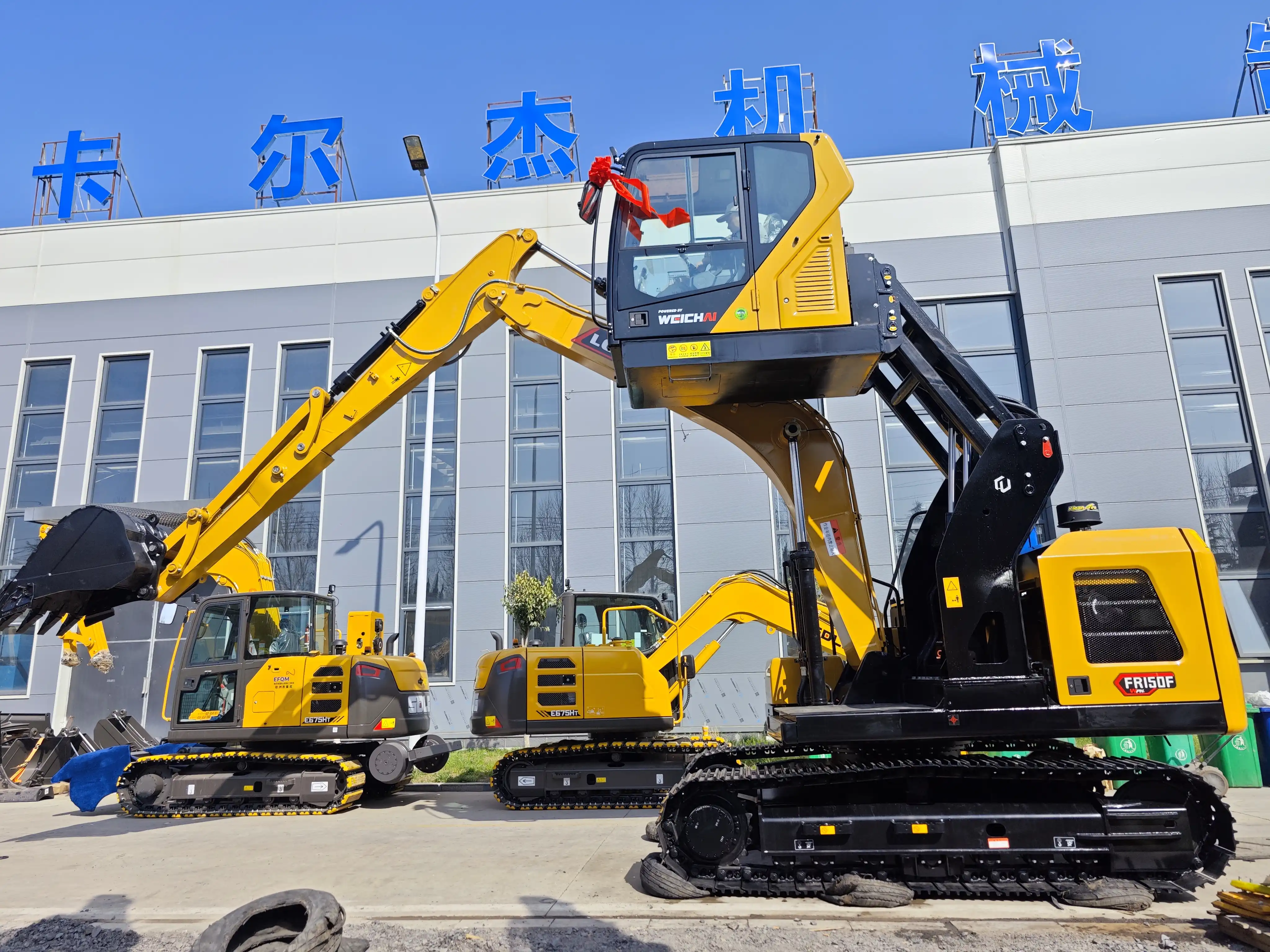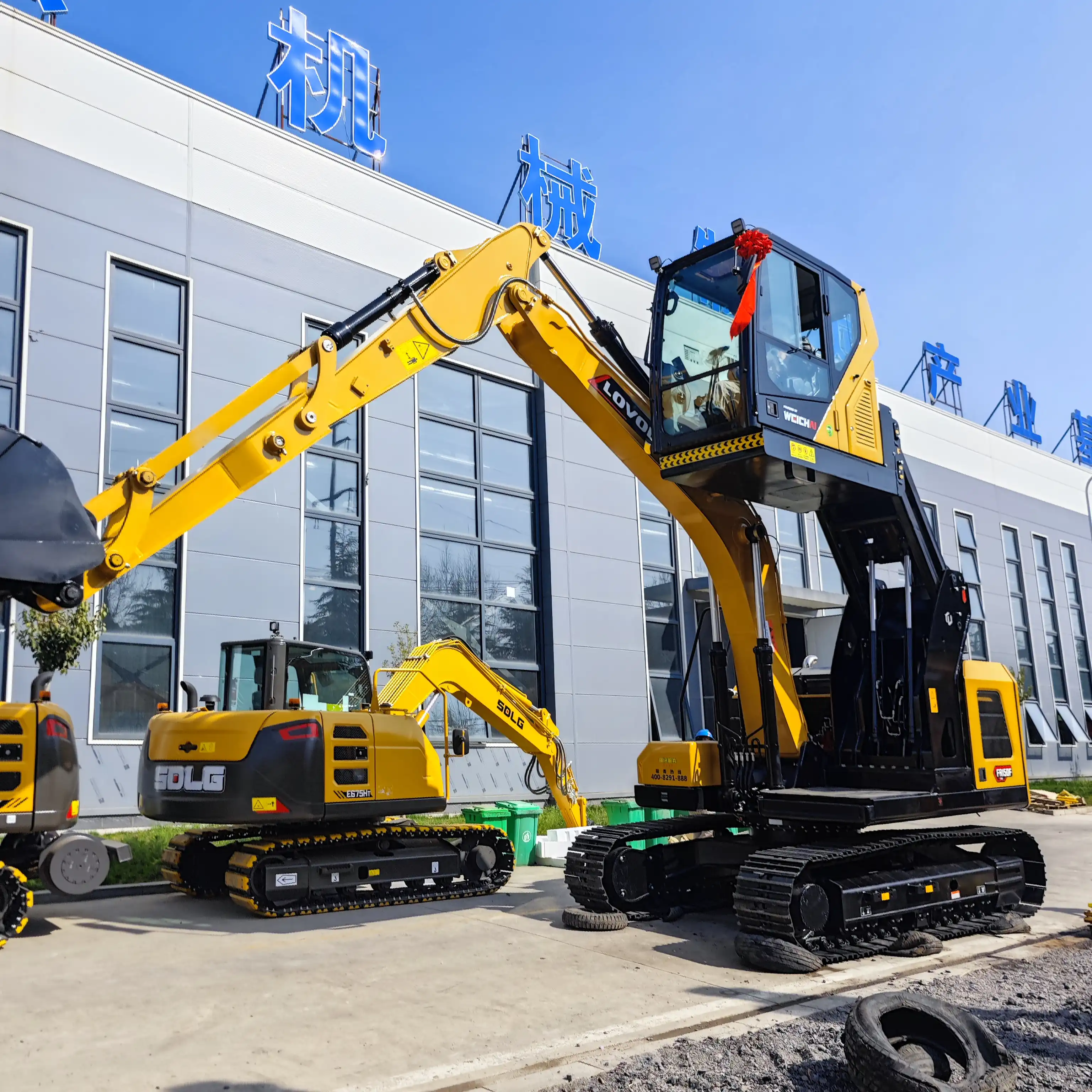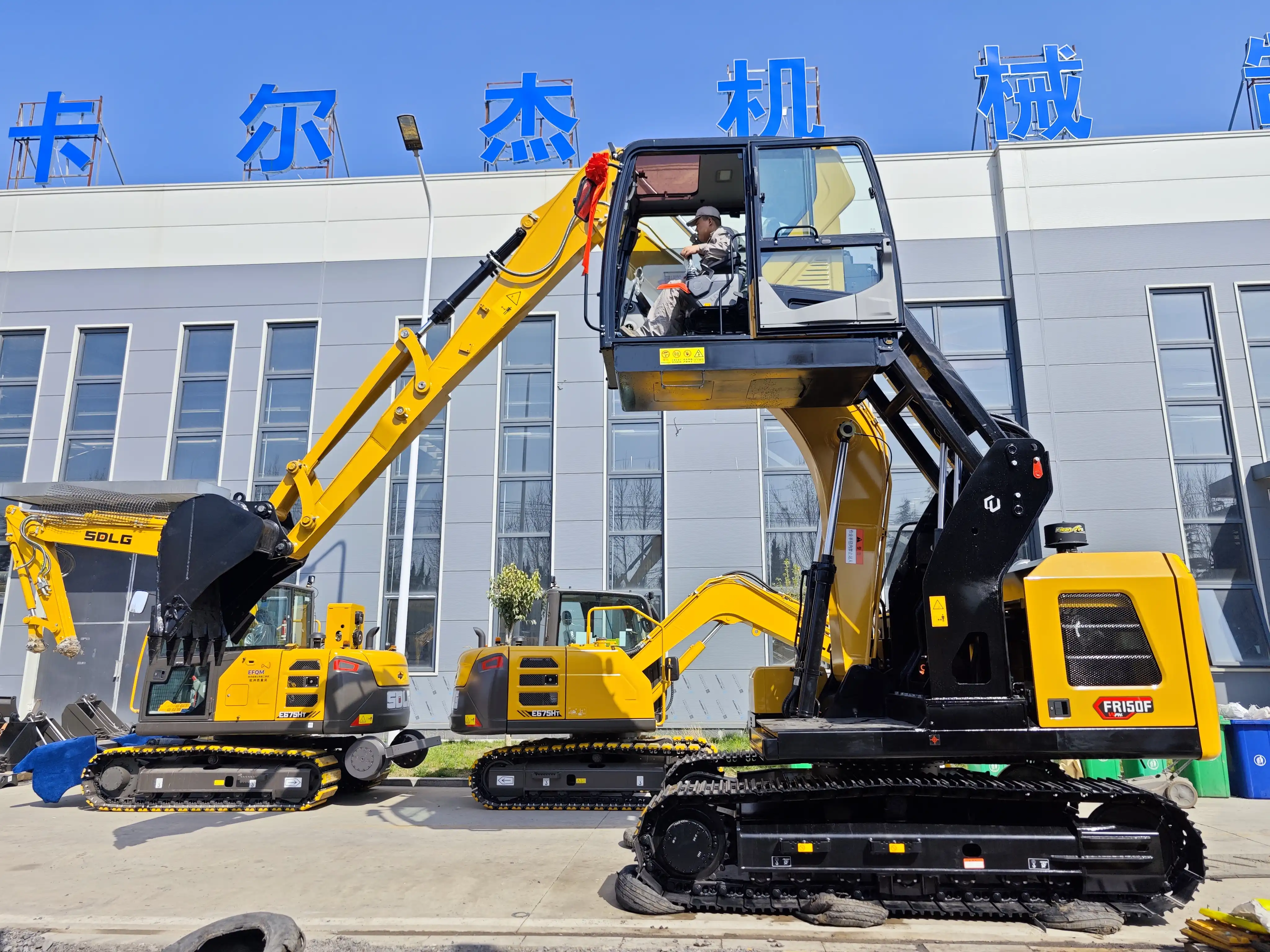The Evolution of Excavator Cab Design
The evolution of excavator cab design represents one of the most significant transformations in construction equipment over the past century. From rudimentary open platforms with minimal operator protection to today's sophisticated climate-controlled command centers, the journey of the cab showcases how engineering, ergonomics, and technology have converged to enhance both productivity and operator comfort. These advancements haven't occurred in isolation but reflect broader technological progress, evolving safety standards, and increasing recognition of operator wellbeing as crucial for project success. Modern cab designs prioritize visibility, control accessibility, noise reduction, and physical comfort, addressing the complex relationship between human operators and powerful machinery. This evolutionary path has transformed excavators from basic earth-moving tools to precision instruments where the cab serves as both a protective shell and a sophisticated interface, enabling operators to work with greater efficiency, safety, and comfort across challenging environments.
Early Stage

The Birth of Excavator Technology
The earliest mechanical excavators emerged in the late 19th century as steam-powered machines with minimal consideration for operator accommodation. During this pioneering phase, the concept of an excavator modification cab barely existed; operators stood on open platforms, fully exposed to weather conditions, dust, and safety hazards. These rudimentary arrangements prioritized mechanical functionality over human comfort, reflecting the industrial mindset of the era.
By the 1920s, basic protective structures began appearing on excavators, though these early cabins were little more than metal frames with simple roofing. They offered minimal protection from falling debris and weather elements but lacked essential features we now associate with modern cabs. Controls were purely mechanical, requiring significant physical effort from operators who typically worked in uncomfortable positions for extended periods.
The absence of proper seating, climate control, soundproofing, or vibration-damping meant operators endured extreme physical strain. Visibility was often compromised, forcing operators to lean precariously outside their minimal protection to view their work area, a practice that led to numerous accidents and injuries. Despite these challenges, these earliest iterations represented the first recognition that the operator environment deserved at least some consideration beyond pure mechanical functionality.
Early Hydraulic Era Transitions
The 1950s brought revolutionary change to excavator design with the introduction of hydraulic systems, which dramatically transformed cab design possibilities. Hydraulic controls required less physical exertion, allowing for more compact and ergonomically positioned levers and pedals. This technological shift permitted manufacturers to reconsider the entire operator environment.
With hydraulic technology, excavator cab designs could become more enclosed and protective. Manufacturers began incorporating reinforced frames that offered enhanced safety during accidents or rollovers. Glass windows replaced open areas or mesh screens, providing better weather protection while maintaining visibility. Basic heating systems started appearing in premium models, though air conditioning remained rare.
Seating improved incrementally with basic suspension systems to mitigate the worst effects of machine vibration. Control layouts began showing early signs of ergonomic consideration, though standardization remained years away. While these cabs were still spartan by modern standards, they represented significant progress in recognizing operator needs. This era laid crucial groundwork for the comfort revolution that would follow, establishing the excavator cab as an integral component requiring dedicated design attention rather than an afterthought to the machine's mechanical systems.
Mid-20th Century to Late 20th Century

The Ergonomic Revolution
The 1960s and 1970s marked a turning point in excavator cab attachments design with the emergence of ergonomics as a scientific discipline influencing industrial equipment. Manufacturers began employing specialists who studied operator movements, physical limitations, and cognitive workload. This research-driven approach transformed cab layouts, introducing adjustable seating positioned for optimal control, access, and visibility.
Control systems evolved significantly during this period. Traditional levers and pedals were redesigned with human biomechanics in mind, requiring less force and allowing more natural positioning. This reduced operator fatigue and the prevalence of repetitive strain injuries that had previously been considered an unavoidable occupational hazard. Instrument panels became more logically arranged, with essential gauges positioned within the operator's primary field of vision.
Seating comfort saw dramatic improvements with the introduction of fully adjustable suspension seats that could be customized to the operator's weight and preferences. These innovations addressed the serious back and spine problems that had plagued equipment operators for generations. While still not luxurious by modern standards, these ergonomic advancements transformed the operator experience and established human factors as essential considerations in excavator cab design.
Safety Standardization
The late 1970s through the 1980s brought increasing regulatory focus on construction equipment safety, profoundly influencing excavator cab development. Organizations like OSHA in the United States and similar bodies internationally began implementing specific requirements for protective structures. Two critical safety innovations emerged during this period: ROPS (Roll-Over Protective Structures) and FOPS (Falling Object Protective Structures).
These standardized safety systems required cabs to withstand specific impact forces and crush scenarios, dramatically improving operator survival rates during accidents. Cab frames became substantially more robust, with reinforced pillars and structural elements designed specifically to maintain survival space during rollovers or when struck by falling materials.
Emergency features multiplied during this period, with standardized exit paths, clearly marked emergency controls, and improved fire safety measures. Visibility continued improving with the introduction of larger glass panels and strategic mirror placement to minimize blind spots. These safety enhancements transformed the excavator cab from a simple operator station into a sophisticated protective environment specifically engineered to preserve life during catastrophic events—a profound shift from earlier eras when operator safety had been largely incidental.
Early 21st Century to Present
Environmental Sustainability Considerations
Environmental awareness has significantly influenced contemporary excavator cab design across multiple dimensions. Modern cabs feature advanced filtration systems that protect operators from jobsite pollutants while reducing the environmental footprint of machine operation. These multi-stage systems remove particulates and chemical contaminants from intake air, addressing the respiratory health issues that historically plagued equipment operators.
Energy efficiency innovations have transformed climate control systems, reducing fuel consumption while maintaining operator comfort. Smart systems adjust automatically based on conditions, operating at minimum necessary power rather than constantly at maximum output. Lighting has similarly evolved, with energy-efficient LED systems replacing power-hungry halogen fixtures both inside cabs and for external work illumination.
Materials selection now incorporates sustainability considerations alongside performance requirements. Recyclable components, non-toxic treatments, and responsibly sourced materials increasingly feature in excavator cab construction. Manufacturers have also addressed end-of-life considerations, designing cabs with disassembly and material recovery in mind.
Perhaps most significantly, modern cabs support more environmentally efficient operation through information systems that monitor fuel consumption, emissions, and operational efficiency. These systems provide operators with real-time feedback that encourages more sustainable operation techniques. This evolution reflects broader industry recognition that environmental responsibility requires technological solutions integrated directly into the operator environment.
Customization and Operator Experience
Today's excavator cab designs recognize the diversity of both applications and operators, offering unprecedented customization options. Adjustability has expanded beyond basic seat positioning to include armrest height, control responsiveness, display configuration, and climate preferences. These adjustments can often be saved as operator profiles, allowing quick transitions between different users.
Visibility has achieved new standards through panoramic design approaches and camera systems that eliminate blind spots. Multiple camera feeds integrate into central displays, providing comprehensive worksite views previously impossible. Some advanced systems even incorporate augmented reality elements, overlaying guidance information onto real-world camera views.
Comfort features now rival those found in luxury vehicles, with premium seating materials, acoustic design rivaling recording studios, and climate systems maintaining precise temperature control regardless of external conditions. Entertainment and convenience features like Bluetooth connectivity, charging ports, and sophisticated audio systems acknowledge that operators often spend entire workdays within the cab environment.
FAQ

①What are the most important safety features in modern excavator cabs?
Modern excavator cabs incorporate multiple critical safety features including ROPS (Roll-Over Protection Systems) and FOPS (Falling Object Protection Systems) certified structures, emergency exit options, safety glass windows, improved visibility through camera systems, fire suppression systems, and ergonomic designs that reduce operator fatigue and prevent accidents.
②How have excavator cab controls evolved over time?
Excavator controls have evolved from purely mechanical levers requiring significant physical effort to sophisticated electro-hydraulic joysticks with programmable settings. Modern systems often integrate multiple functions into intuitive control patterns, reducing operator workload while improving precision. Advanced models now include touchscreen interfaces and customizable control sensitivity.
③What technological advancements might we see in future excavator cab designs?
Future excavator cab designs will likely incorporate more autonomous operation features, advanced haptic feedback controls, augmented reality displays, AI-assisted operation guidance, and more sophisticated integration with project management systems. We may also see increased modularity allowing for rapid customization based on application requirements.
As construction demands grow increasingly complex, the cab continues adapting to meet these challenges through thoughtful engineering and human-centered design. If you're looking for high-quality excavator cabs and attachments designed with operator comfort and safety in mind, reach out to the TianNuo team of specialists at rich@stnd-machinery.com to discuss how our customizable solutions can meet your specific project requirements.
References
Smith, R. (2023). "The Complete History of Heavy Equipment Design: 1900-2023." Construction Engineering Press.
Johnson, M. & Zhang, L. (2022). "Ergonomics in Construction Equipment: Lessons from Five Decades of Research." Journal of Industrial Engineering, 45(3).
Taylor Industrial Research Group. (2022). "Safety Standards Evolution in Earth-Moving Equipment." Industrial Safety Review, Volume 12.
Williams, H. (2021). "Technological Transformation in Construction Equipment Interfaces." Engineering Technology Quarterly.
International Construction Equipment Manufacturers Association. (2023). "Annual Report on Construction Equipment Design Trends: Focus on Operator Environment."
About Author: Arm
Arm is a leading expert in the field of specialized construction and railway maintenance equipment, working at Tiannuo Company.

